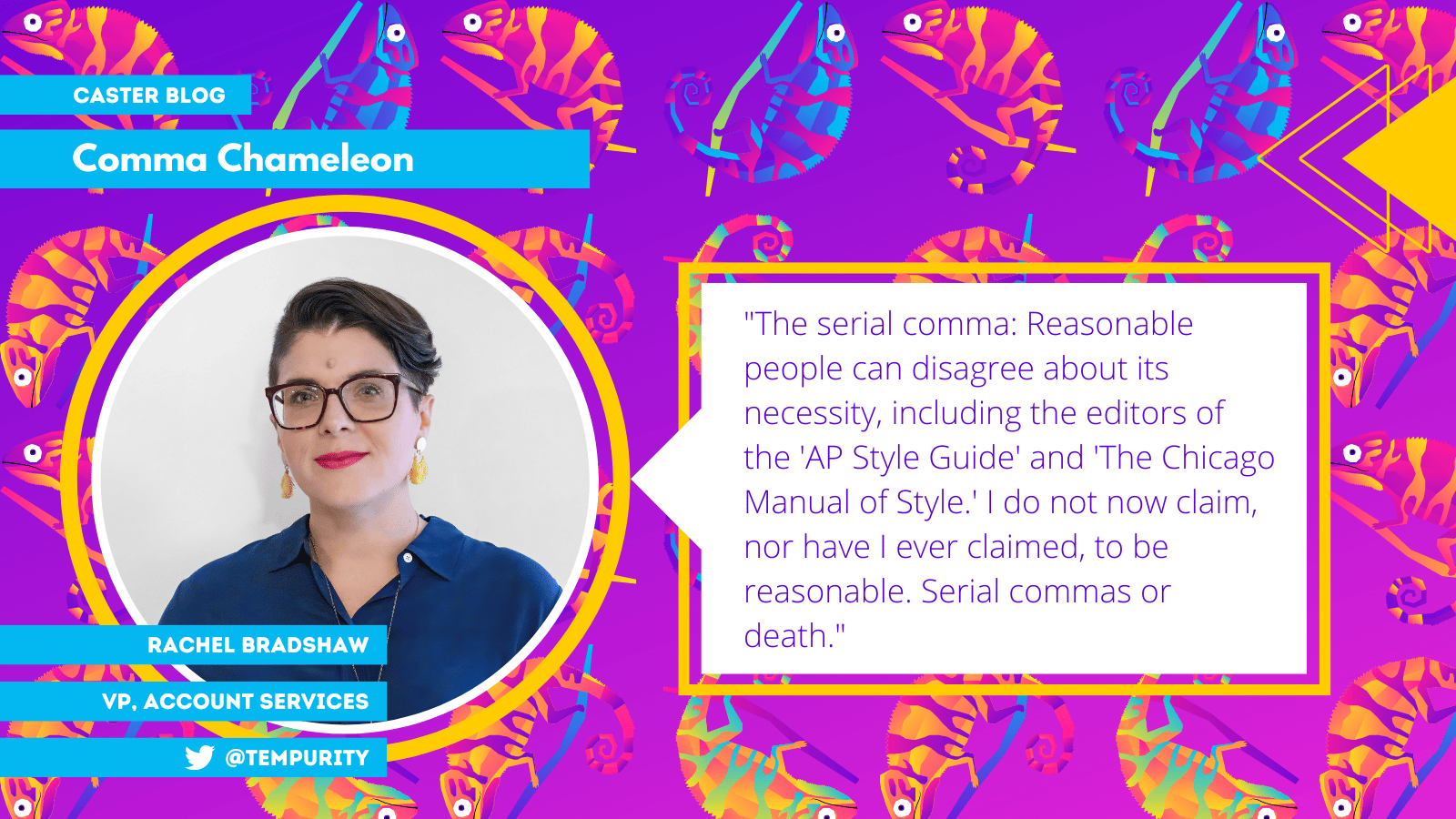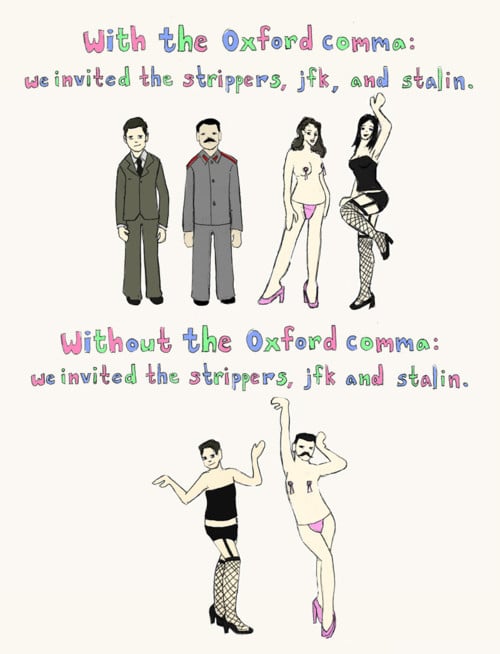
Comma Chameleon
PR pros do a lot of writing and editing. If we’re not careful, we can wind up getting pretty high on our own supply in the process. We develop deeply ingrained preferences for our own habits, viewing stylistic differences as errors, corrections as affronts, and rewrites as assaults on our souls.
Reader, I have not been careful.
I have developed a writing hang-up. It’s a small one, but it has the power to drive me to distraction – or at least, to spend 20 minutes engaging in grammar Twitter beef. Here it is:
,
That’s it. The comma. The FREAKING COMMA. To paraphrase Culture Club, it comes and goes, appearing in writing where it doesn’t belong and disappearing when it’s most needed. Well guess what? I’m a woman with conviction, and today, by (Boy) George, I’m going to sell the contradictions of comma usage.
The Great Debate: Serial Commas
The serial comma, AKA the Oxford Comma, often appears between the penultimate and final items in a written list. Reasonable people can disagree about its necessity, including the editors of the “AP Style Guide” and “The Chicago Manual of Style.” I do not now claim, nor have I ever claimed, to be reasonable. Serial commas or death.
Here’s the deal: AP says you should use a serial comma only when you really need one to clarify the division between list items. For example:
- “My favorite performers are Lizzo, Beyonce and Brandi Carlile.” – This simple list doesn’t need a serial comma per AP style.
- “The ceremony included performances from Lizzo and Cardi B, Beyonce and Big Freedia, and Brandi Carlile.” – This list includes compound phrases, making it complex enough to merit a serial comma.
Personally, the first example makes my brain itch. I think, “Are Beyonce and Brandi Carlile touring together? Why? And how much do tickets cost?” Then comes the disappointing realization that I’m looking at a missing serial comma instead of a boundary-smashing musical collaboration. Or to use another famous example:

Lots of famous and successful writers, particularly journalists, view my position as narrow-minded, hidebound, and dumb. Many people see the serial comma as a wasted keystroke: Anything that promotes economy in writing is good. If the lack of a serial comma makes a sentence confusing, they say, you should fix the sentence (e.g., just say “We invited JFK, Stalin and the strippers.” Boom, problem solved.)
But honestly: what kind of rule is, “Don’t use a serial comma unless you really need to?” According to Chicago style, you should use the serial comma…always. Now that’s a rule you can set your watch by: no soul-searching to determine if your sentence could be hilariously misconstrued without the proper grammatical prophylactic. It’s just always there.
Unfortunately, as PR pros, we don’t always have the luxury of choosing the reasonable, rational, right path. For many of us, the “AP Style Guide” is something akin to a Bible, and its woeful guidance on the serial comma is my own personal crisis of faith.
Except, ha-ha —LOOPHOLE: Some publications agree with me! Granted, it’s mostly seen in hoity-toity outlets like The Atlantic and The New Yorker, but the serial comma does have its partisans even among the news media.
With respect to serial commas, PR pros themselves are the comma chameleons. We must adhere to the style of any publications we work with, which means eschewing the serial comma in most cases. In my personal writing, though? On this here blog? Serial commas ALL DAY LONG.
The Comma Splice
Comma splices, my other great source of editorial pain, are not the subject of any debate. They are always wrong, end of story, PERIODT. And yet: I see them all the freaking time. They show up in work I’m proofing, in client materials, and even in press releases (but not Caster’s. I would die). They’re everywhere.
A comma splice occurs when two independent clauses are separated with only a comma. It’s like a gene splice that takes two adorable animals with happy, independent existences and smashes them together into a disgusting offense against nature.
Why do comma splices offend me so? Because they are so easy to fix! Unlike a serial comma issue, which might require you to rewrite a whole sentence, a comma splice can be repaired with a single keystroke.
For example:
- WRONG: I will splice my sentences, I don’t care how angry Rachel gets.
- THERE: I will splice my sentences. I don’t care how angry Rachel gets.
- I: I will splice my sentences; I don’t care how angry Rachel gets.
- FIXED: I will splice my sentences, and I don’t care how angry Rachel gets.
- IT: I will splice my sentences – I don’t care how angry Rachel gets.
A comma splice is the grammatical equivalent of an unzipped fly. It’s the result of carelessness, and it takes less than a second to fix. Check your grammar fly before you leave first draft, kids.
I could go on about the use and abuse of commas, but there’s only so much ranting one Caster blog can take. This song is going to need a reprise. In the meantime, follow me on Twitter @Tempurity for more excellent opinions.

